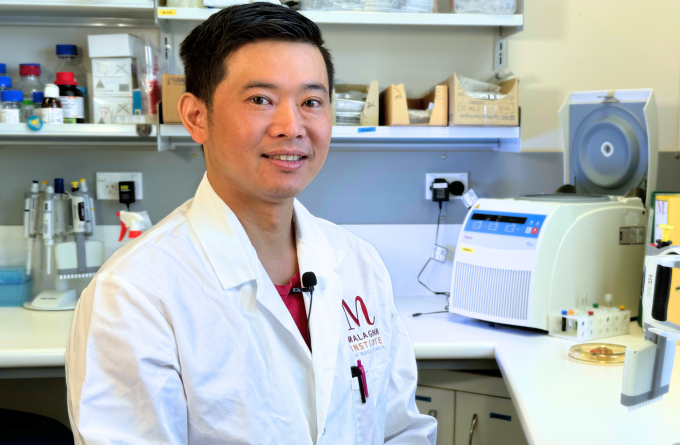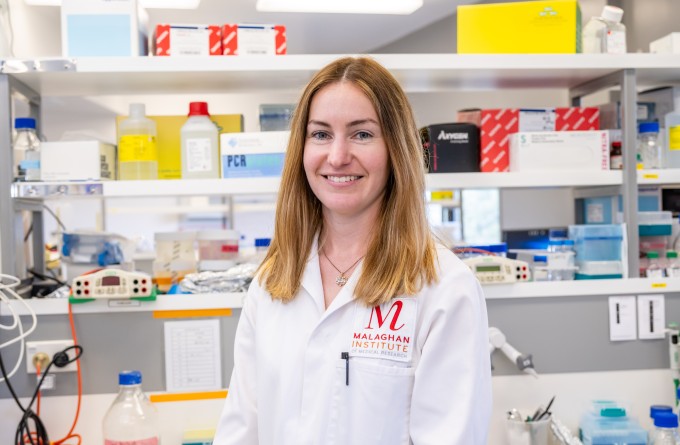12 February 2024
A clue about how we might target specific immune cells to prevent disease has been found in a recent study from the Malaghan Institute which investigated the role of MAIT cells in the development of allergies.
Dr Alissa Cait
The research, published in Allergy, showed that MAIT cells could both help and hinder the development of allergies depending on where they were found in the body. While the findings further compound the complex relationship between immune cells and allergic disease, they shed some much-needed light on how researchers might develop future treatments for allergic disease by targeting key cells.
“We found that a specific subset of immune cells called MAIT cells plays an important role in the development of allergies,” says Dr Alissa Cait who led this Health Research Council of New Zealand-funded work. “Interestingly, we identified that this immune cell plays a different, and opposite, role in different tissues.”
MAIT cells are unique as they are associated with the mucosal areas in the body; the airway, gut and nasal passages. They’re one of the first immune cells to encounter potentially harmful organisms, including allergens, which makes them a key cell of interest for immunologists. They’re often associated with ‘homeostasis’; keeping the body on an even keel. Perhaps, then, it’s not surprising they can play both sides of the allergic disease field.
“It’s been previously discovered that MAIT cells in the lung can protect against allergy when exposure to allergens first happen in the airway. Our unexpected finding was that MAIT cells in the skin have the opposite effect: exposure to the same allergens promotes allergy development. This is really interesting in the context of the allergic march (link) – the observation that infants with skin allergies, such as atopic dermatitis, progress over time to food allergies and then asthma.
“We’ve also known for a long time that introducing allergens via the gut – a mucosal site similar to the lung, protects against food allergies – what we call oral tolerance. But exposure to those same allergens in skin first is likely promoting food allergies.”
The results from this study closely mirror other findings from Malaghan scientists, eluding to the important role of the skin, and the immune cells that call them home, has in the initial development and possible prevention of allergic disease.
“These results are quite similar to findings from the Professor Ronchese Lab. They focused on other immune cells, in this case dendritic cells, which they found can behave different if found in the skin – where they can prime allergic responses.
“In our research, understanding the role of the MAIT cell in the skin and how they contribute to the development of systemic allergies like asthma and food allergies could allow us to develop novel interventions,” says Dr Cait. “There are some very effective topical inhibitors of MAIT cells in the works with our collaborators at the Ferrier Research Institute that could have potential in this context.”
These findings are yet to be tested in humans, but the researchers hope to continue to explore whether there could be a potential therapeutic benefit in blocking MAIT cells in the skin.
“We have lots of interesting MAIT cell research going on in the lab,” says Dr Cait. “There is lots to understand with those MAIT cells, how they might contribute to allergy and how we can intervene to prevent the development of potentially debilitating conditions.”
Related articles

Fighting allergic skin disease at its root
17 December 2024

New research deepening understanding of elusive eosinophils
27 June 2024

International collaboration finds lipid imbalance in the skin may contribute to inflammatory conditions
24 June 2024

The ever-evolving world of immunology research
13 June 2024

Double doctor: exceptional thesis awarded to Malaghan gastroenterologist
5 June 2024

Health Research Council to fund clinical study investigating the skin’s role in initiating allergic disease
28 June 2023
